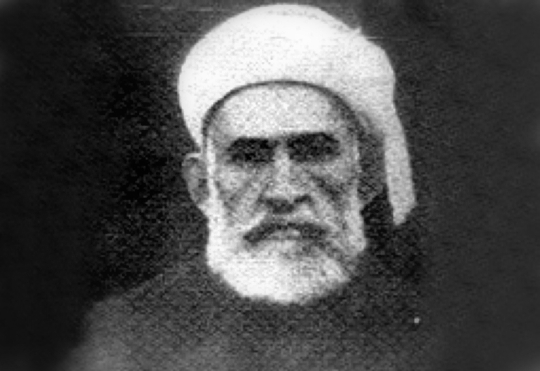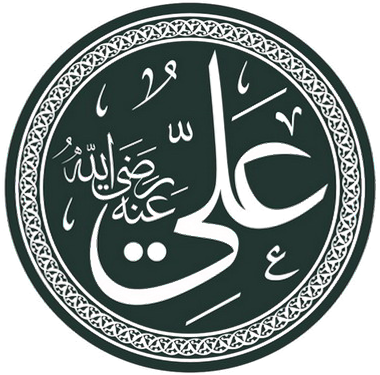|
Koçgiri Rebellion
The Koçgiri rebellion (, ) was a Kurdish uprising, that began in the overwhelmingly militant Koçgiri region in present-day eastern Sivas Province in February 1921. The rebellion was initially Alevi, but succeeded in gathering support from nearby Sunni tribes. The tribe leaders had close relations to the Society for the Rise of Kurdistan (SAK). The rebellion was defeated in June 1921. Background After the Treaty of Sèvres was signed the Kurds began to feel more trustful that they were able to reach at least some sort of an autonomous government for themselves. Abdulkadir Ubeydullah, the son of Sheikh Ubeydullah and the president of the SAK, supported the idea of a Kurdish autonomy within Turkey. But Nuri Dersimi and Mustafa Pasha wanted more than autonomy, they wanted to establish an independent Kurdistan according to article 64 of the treaty. Mustafa Kemal followed up on the events in the Dersim area and as it came to his knowledge that some of the Kurds were pursuing ... [...More Info...] [...Related Items...] OR: [Wikipedia] [Google] [Baidu] |
Kurdish Rebellions In Turkey
Kurdish may refer to: *Kurds or Kurdish people *Kurdish languages *Kurdish alphabets *Kurdistan, the land of the Kurdish people which includes: **Southern Kurdistan **Eastern Kurdistan **Northern Kurdistan **Western Kurdistan See also * Kurd (other) *Kurdish literature *Kurdish music *Kurdish rugs * Kurdish cuisine * Kurdish culture *Kurdish nationalism Kurdish nationalism (, ) is a nationalist political movement which asserts that Kurds are a nation and espouses the creation of an independent Kurdistan from Iran, Iraq, Syria and Turkey. Early Kurdish nationalism had its roots in the Ottoman ... {{disambiguation Language and nationality disambiguation pages ... [...More Info...] [...Related Items...] OR: [Wikipedia] [Google] [Baidu] |
Nuri Dersimi
Mehmed Nuri Dersimi (1893 in Akzunik in ''Dersim'' (today Tunceli) – 22 August 1973 in Aleppo), also known as Baytar Nuri, was a Kurdish writer, revolutionary and intellectual. Dersimi was born in March 1893 in the village Akzunik to the west of Hozat, in the Sanjak Dersim. From 1899 he went to primary school in Hozat. After he was sent to the military academy in Elazığ, but he wasn't happy there and asked to come back to his family. So his father decided to move with his family to Harput in 1905, where Dersimi studied in the secondary school. There Dersimi was more comfortable. In 1907 the family moved again to Hozat, where Dersimi could stay with his uncle and visit the local boarding school. 1911 he traveled over Trabzon per ship to Istanbul and began to study veterinary medicine. There he became a member of the Kurdish student society ''Hevi-Kürt Talebe Cemiyeti'' and 1912 he became the secretary of the ''Kürdistan Muhibban Cemiyeti.'' During World War I, he worked as ... [...More Info...] [...Related Items...] OR: [Wikipedia] [Google] [Baidu] |
Abdulkadir Ubeydullah
Abdulkadir Ubeydullah (1851, Şemdinli - 1925 Diyarbakır) was a President of the Kurdish Society for Cooperation and Progress (KTTC) and later the Society for the Rise of Kurdistan. He was a leading Kurdish intellectual and a once also a member of the Senate of the Ottoman Empire. He also took part in the uprising of Sheik Ubeydullah led by his father and was accused of having taken part in the Sheikh Said rebellion. Early life The son of the notable Kurdish leader Sheikh Ubeydullah and grandson of Sheikh Taha. He was educated in the Naqshbandi tradition and his family claimed descent from Abdul Qadir Gilani. He was fluent in Kurdish, Turkish, Persian, Arabic and French. During the uprising of Sheik Ubeydullah, he was the commander of a contingent of Kurdish forces, which from October 1880 onwards on, captured several towns from the shores of Lake Urmia to the outskirts of Tabriz. Exile He was exiled in 1881 after his father's unsuccessful rebellion against the Ottoman ... [...More Info...] [...Related Items...] OR: [Wikipedia] [Google] [Baidu] |
Treaty Of Sèvres
The Treaty of Sèvres (french: Traité de Sèvres) was a 1920 treaty signed between the Allies of World War I and the Ottoman Empire. The treaty ceded large parts of Ottoman territory to France, the United Kingdom, Greece and Italy, as well as creating large occupation zones within the Ottoman Empire. It was one of a series of treaties that the Central Powers signed with the Allied Powers after their defeat in World War I. Hostilities had already ended with the Armistice of Mudros. The treaty was signed on 10 August 1920 in an exhibition room at the Manufacture nationale de Sèvres porcelain factory in Sèvres, France. The Treaty of Sèvres marked the beginning of the partitioning of the Ottoman Empire. The treaty's stipulations included the renunciation of most territory not inhabited by Turkish people and their cession to the Allied administration. The ceding of Eastern Mediterranean lands saw the introduction of novel polities, including the British Mandate for Pal ... [...More Info...] [...Related Items...] OR: [Wikipedia] [Google] [Baidu] |
JSTOR
JSTOR (; short for ''Journal Storage'') is a digital library founded in 1995 in New York City. Originally containing digitized back issues of academic journals, it now encompasses books and other primary sources as well as current issues of journals in the humanities and social sciences. It provides full-text searches of almost 2,000 journals. , more than 8,000 institutions in more than 160 countries had access to JSTOR. Most access is by subscription but some of the site is public domain, and open access content is available free of charge. JSTOR's revenue was $86 million in 2015. History William G. Bowen, president of Princeton University from 1972 to 1988, founded JSTOR in 1994. JSTOR was originally conceived as a solution to one of the problems faced by libraries, especially research and university libraries, due to the increasing number of academic journals in existence. Most libraries found it prohibitively expensive in terms of cost and space to maintain a comprehe ... [...More Info...] [...Related Items...] OR: [Wikipedia] [Google] [Baidu] |
Tunceli University
Munzur University ( Turkish:''Munzur Üniversitesi'') is a university located in Tunceli Tunceli ( ku, Dêrsim) is a city and municipality in eastern Turkey. It is the capital of Tunceli Province, located in the middle of the Eastern Anatolia Region. The city has a Kurdish-majority population and was a site of the Dersim rebellion. ..., Turkey. It was established in 2008 as "Tunceli Üniversitesi". In time, the university has grown to have 7 faculties, 3 vocational schools, and 6 institutes. It is named after a nearby mountain. Faculties * Faculty of Letters * Faculty of Fine Arts * Faculty of Economics and Administrative Science * Faculty of Communication * Faculty of Engineering * Faculty of Sport Sciences * Faculty of Aquaculture References {{Coord missing, Turkey Universities and colleges in Turkey Educational institutions established in 2008 State universities and colleges in Turkey 2008 establishments in Turkey Buildings and structures in Tunceli Province [...More Info...] [...Related Items...] OR: [Wikipedia] [Google] [Baidu] |
Sunni
Sunni Islam () is the largest branch of Islam, followed by 85–90% of the world's Muslims. Its name comes from the word '' Sunnah'', referring to the tradition of Muhammad. The differences between Sunni and Shia Muslims arose from a disagreement over the succession to Muhammad and subsequently acquired broader political significance, as well as theological and juridical dimensions. According to Sunni traditions, Muhammad left no successor and the participants of the Saqifah event appointed Abu Bakr as the next-in-line (the first caliph). This contrasts with the Shia view, which holds that Muhammad appointed his son-in-law and cousin Ali ibn Abi Talib as his successor. The adherents of Sunni Islam are referred to in Arabic as ("the people of the Sunnah and the community") or for short. In English, its doctrines and practices are sometimes called ''Sunnism'', while adherents are known as Sunni Muslims, Sunnis, Sunnites and Ahlus Sunnah. Sunni Islam is sometimes refer ... [...More Info...] [...Related Items...] OR: [Wikipedia] [Google] [Baidu] |
Alevi
Alevism or Anatolian Alevism (; tr, Alevilik, ''Anadolu Aleviliği'' or ''Kızılbaşlık''; ; az, Ələvilik) is a local Islamic tradition, whose adherents follow the mystical Alevi Islamic ( ''bāṭenī'') teachings of Haji Bektash Veli, who is supposed to have taught the teachings of Ali and the Twelve Imams. Differing from Sunnism and other Twelver Shia, Alevis have no binding religious dogmas, and teachings are passed on by a spiritual leader. They acknowledge the six articles of faith of Islam, but may differ regarding their interpretation. Adherents of Alevism are found primarily in Turkey and estimates of the percentage of Turkey's population that are Alevi include between 4% and 15%. Etymology "Alevi" () is generally explained as referring to Ali, the cousin and son-in-law of Muhammad. The name represents a Turkish form of the word ''‘Alawi'' ( ar, علوي) "of or pertaining to Ali". A minority viewpoint is that of the Ishikists, who assert, "Alevi" was ... [...More Info...] [...Related Items...] OR: [Wikipedia] [Google] [Baidu] |
Kurds
ug:كۇردلار Kurds ( ku, کورد ,Kurd, italic=yes, rtl=yes) or Kurdish people are an Iranian ethnic group native to the mountainous region of Kurdistan in Western Asia, which spans southeastern Turkey, northwestern Iran, northern Iraq, and northern Syria. There are exclaves of Kurds in Central Anatolia, Khorasan, and the Caucasus, as well as significant Kurdish diaspora communities in the cities of western Turkey (in particular Istanbul) and Western Europe (primarily in Germany). The Kurdish population is estimated to be between 30 and 45 million. Kurds speak the Kurdish languages and the Zaza–Gorani languages, which belong to the Western Iranian branch of the Iranian languages. After World War I and the defeat of the Ottoman Empire, the victorious Western allies made provision for a Kurdish state in the 1920 Treaty of Sèvres. However, that promise was broken three years later, when the Treaty of Lausanne set the boundaries of modern Turkey and made no s ... [...More Info...] [...Related Items...] OR: [Wikipedia] [Google] [Baidu] |
Cavalry
Historically, cavalry (from the French word ''cavalerie'', itself derived from "cheval" meaning "horse") are soldiers or warriors who fight mounted on horseback. Cavalry were the most mobile of the combat arms, operating as light cavalry in the roles of reconnaissance, screening, and skirmishing in many armies, or as heavy cavalry for decisive shock attacks in other armies. An individual soldier in the cavalry is known by a number of designations depending on era and tactics, such as cavalryman, horseman, trooper, cataphract, knight, hussar, uhlan, mamluk, cuirassier, lancer, dragoon, or horse archer. The designation of ''cavalry'' was not usually given to any military forces that used other animals for mounts, such as camels or elephants. Infantry who moved on horseback, but dismounted to fight on foot, were known in the early 17th to the early 18th century as ''dragoons'', a class of mounted infantry which in most armies later evolved into standard cavalry while retain ... [...More Info...] [...Related Items...] OR: [Wikipedia] [Google] [Baidu] |
Heavy Machine Gun
A heavy machine gun (HMG) is significantly larger than light, medium or general-purpose machine guns. HMGs are typically too heavy to be man-portable (carried by one person) and require mounting onto a weapons platform to be operably stable or tactically mobile, have more formidable firepower, and generally require a team of personnel for operation and maintenance. There are two generally recognized classes of weapons identified as HMGs. The first are weapons from World War I identified as "heavy" due to the weight and cumbersomeness of the weapons themselves, which prevents infantrymen from transporting on foot, such as the M1917 Browning machine gun. The second are large-caliber ( 12.7×99mm, 12.7×108mm, 14.5×114mm, or larger) machine guns, pioneered by John Browning with the M2 machine gun, designed to provide increased effective range, penetration and destructive power against covers, vehicles, aircraft and light buildings/fortifications beyond the standard-caliber ... [...More Info...] [...Related Items...] OR: [Wikipedia] [Google] [Baidu] |





.jpg)

